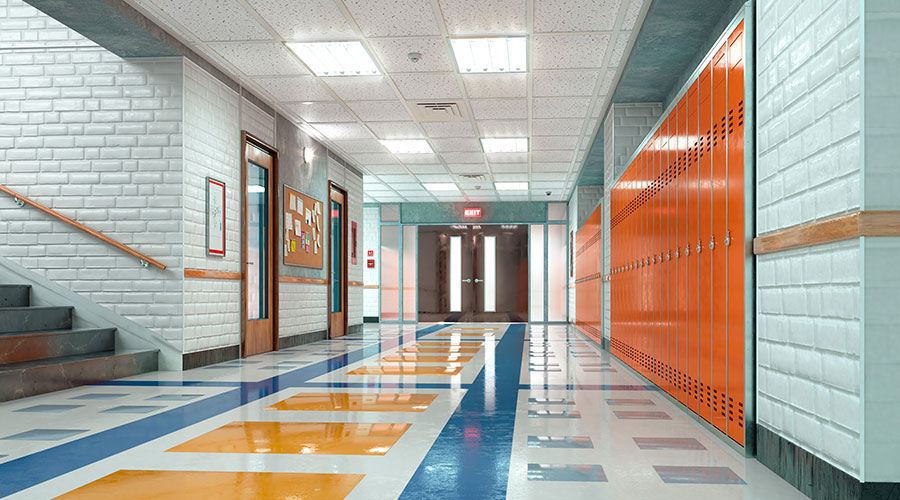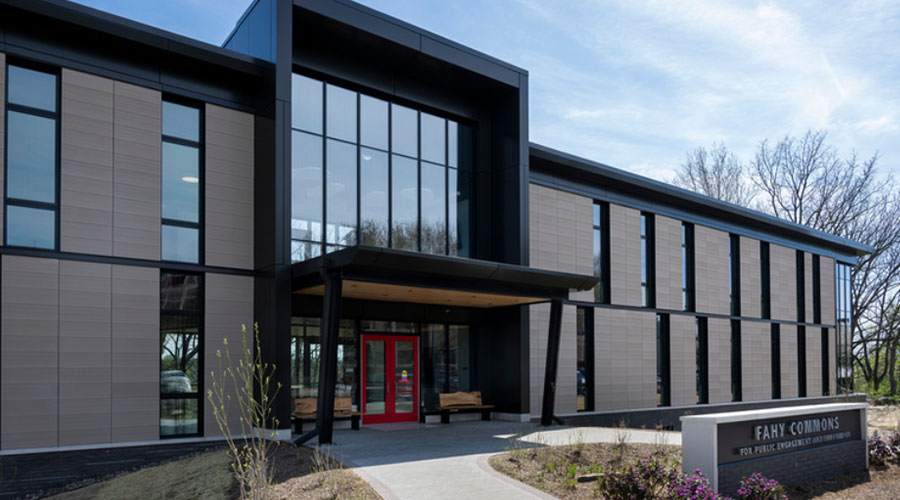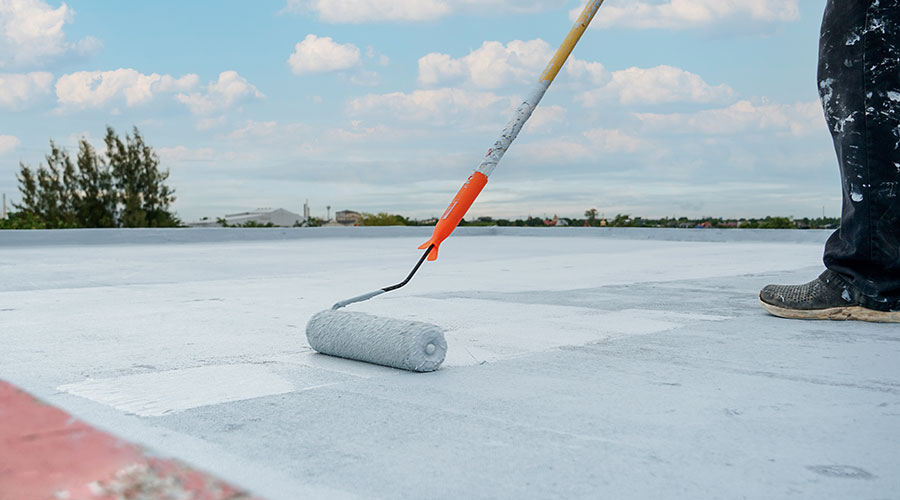Making the Case for Performance
A closer look at the long-term benefits of properly installed and maintained asphalt roofing systems
A solid core of building owners, along with a network of roofing professionals, continues to advocate asphalt roofing systems. Continued demand is driven by the desire of building managers and owners for long roof system life cycles, as well as the fact that asphalt systems are easy to maintain and perform well in severe weather.
An informal survey of roof consultants and building managers and owners commissioned by the Quality Asphalt Roofing Council (QARC) shows a high level of agreement that a well-maintained, hot-mopped built-up roofing (BUR) system often lasts 20 years or more. Respondents felt even more strongly that preventive maintenance (PM) helps maximize the life of a BUR or modified bitumen system.
The life expectancy of an asphalt roofing system depends on the commitment to routine maintenance, and early detection is a key factor in this effort. Problem areas can be detected and fixed before they develop into leaks. Inspections can reveal situations that could lead to felt erosion or brittleness.
Also, punctures and cuts to the membrane can occur, so it is wise to remove sharp objects and debris from the roof. Clogged drains or poorly sealed flashings also present problems, and the effects of chemical exhausts on roofing materials should be monitored.
Managers should schedule inspections on aging roofs, as well as on new roofs, to guard against errors in installation, design and specification. Early detection of defects can be the key to extending roof life. The biggest foes to long service life are heat and rooftop foot traffic.
“Constant trafficking and sometimes abuse by construction and maintenance activities shorten roof life,” says Tim Pennigar, project manager for structural systems with Duke University Medical Center. “We believe the longest-lasting asphalt membranes for our next generation will be configured as protected membrane roofing (PMR).”
Toward Sustainability
Pennigar also has become more passionate about the substrate that supports the roofing membrane. The longest-lasting BUR membranes on his campus are installed over lightweight insulating concrete (LWIC).
“We have a strong sustainability culture on the Duke campus,” Pennigar says. “My design objective is to extend roof life cycle and to minimize demolition debris and landfill waste at the end of a roof’s service life. Consequently, we favor highly durable roof designs, such as PMR or LWIC.” The main lesson is that roofing membranes perform much better when supported by a durable, stable substrate.
For Pennigar, durability is the true measure of sustainability. He says it is important not only to select durable roofing components but also to ensure that these components are integrated into a functional and durable system.
Severe-weather Performance
Managers often opt for hot-applied BUR systems because they offer better protection in severe weather than synthetic roof membranes. A BUR system has substantially greater mass than a single-ply system. A four-ply BUR system provides about 280 mils of waterproofing thickness, whereas most single-ply systems average 60 mils or fewer. The multiple layers of a BUR system result in a thick, heavy membrane that can provide good protection against wind uplift and penetration by wind-blown objects.
Also, when asphalt is applied directly to a structural concrete roof deck or a hot-applied asphalt roof system is applied to an insulated roof deck, it is considered a fully adhered system. An important benefit of fully adhered systems is they distribute typical building stresses over an entire roof membrane.
Single-ply systems that are not fully adhered have fasteners designed to hold a roof membrane in place, but events such as high winds can produce stress concentrations, or point loading, strong enough to compromise the integrity of the roof or tear apart the roof membrane. Appropriate fasteners spaced closely together are used successfully in many roof systems.
Toward Better Installation
Training is essential to managing a BUR system installation. Applying hot-applied asphalt requires a well-trained and skilled work force. Also, modern equipment is improving the quality of work, for example, by providing better control of asphalt temperature and viscosity during installation, as well as fume emissions.
Fume-recovery systems are used successfully in the application of asphalt materials on schools, hospitals and other facilities where occupants or specialized equipment are sensitive to fumes. These systems either burn up smoke and fumes or capture them in filters.
Perceptions of building occupants can be a concern when an asphalt kettle is used in a health care or research environment.
“In fairness, we struggle equally if not more with solvent-based adhesives required in single-ply construction,” Pennigar says. “Fume-control systems are quite effective, but the point of asphalt application is still a challenge, so it’s good to see the industry developing new products and new techniques to control fumes at the point of use.”
Asphalt nuisance odors can be minimized with proper care and equipment, and an array of solutions is available to reduce or eliminate fumes altogether. Fume-recovery systems represent one successful approach. Also, low-fuming asphalts have been used successfully on high-density, fume-sensitive occupancy-type buildings for many years. More recently, new additives have been developed to reduce odors. These were developed for the paving industry and are being developed for roofing applications.
Maximum Performance
Most low-slope commercial buildings are candidates for asphalt roof systems, whether those roof systems are traditional hot-applied BUR, modified bitumen or a combination of the two. Pennigar says he is interested in self-adhering modified bitumen products.
“The asphalt industry has provided us with a number of membrane options for working in difficult areas,” he says. “We still use torch-down sheets on campus, especially on older structures with mass walls, concrete decks and curbs. But I am less inclined to specify a torch-down system on some of our newer buildings with cavity wall construction, particularly ones with HVAC pressurization concerns.
“Presently, the most reliable modified bitumen seams that we have observed are adhered with a hot-air gun. I think the roofer pays more attention to seam quality — that is, consistent bleedout when using the hot-air method.”
Manufacturers of competitive roof systems might fuel speculation that BUR systems are obsolete, but multiple-layer asphalt roof membranes have great appeal to building managers owners and continue to play a major role in the high-quality segment of the market, where owners demand systems that offer maximum performance.
This article was provided by the Asphalt Roofing Manufacturers Association — www.asphaltroofing — and the Quality Asphalt Roofing Council.
Spotlight: ARMA, QARC
The Asphalt Roofing Manufacturers Association (ARMA) is the North American trade association representing the manufacturers and suppliers of bituminous-based residential and commercial fiberglass and organic asphalt shingle roofing products, roll roofing, built-up roof systems and modified bitumen roof systems. For additional information, visit www.asphaltroofing.org.
The Quality Asphalt Roofing Council (QARC) is an initiative created to support and promote built-up and modified bitumen roof systems under the auspices of ARMA. The council is composed of roll goods producers, asphalt suppliers, equipment manufacturers, and packaging suppliers.
|
Related Topics:











